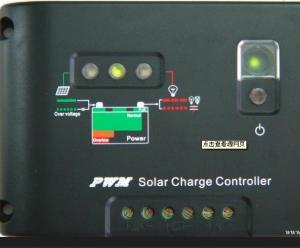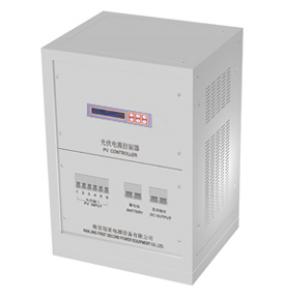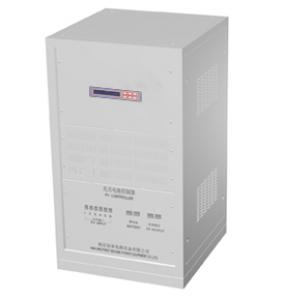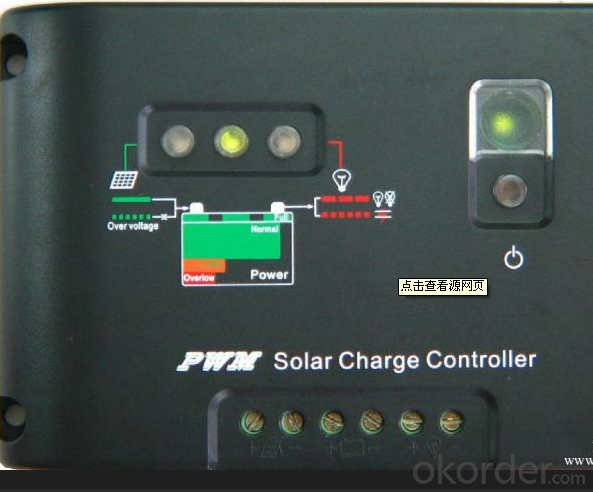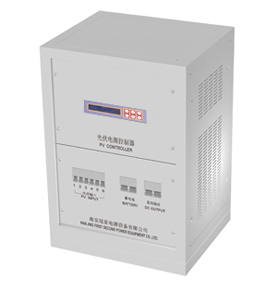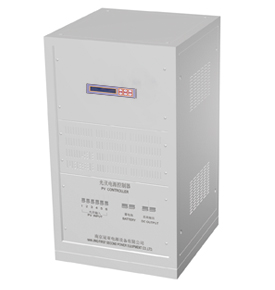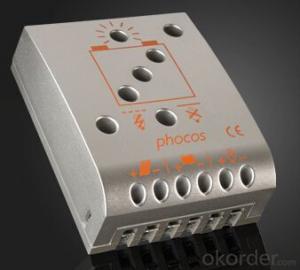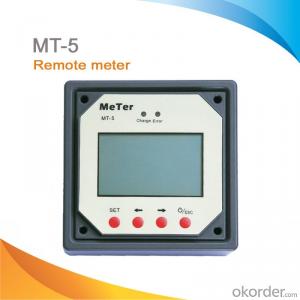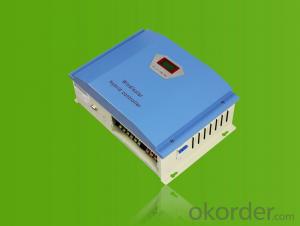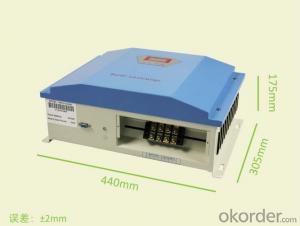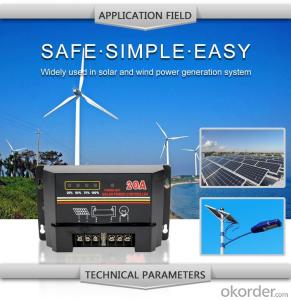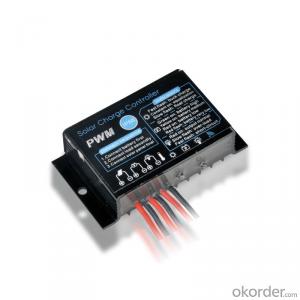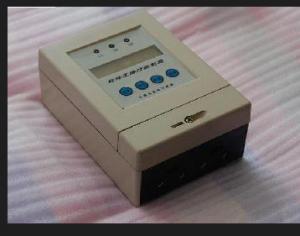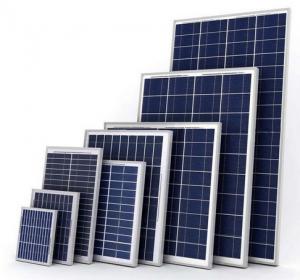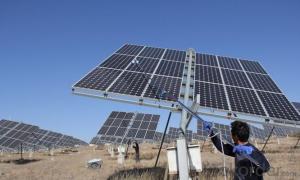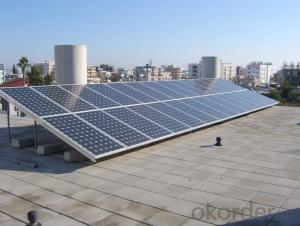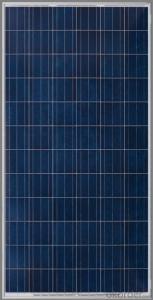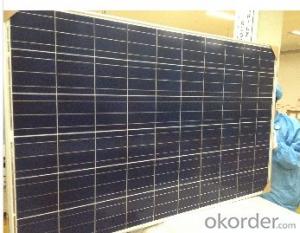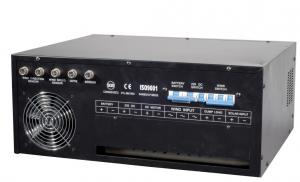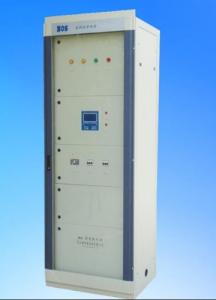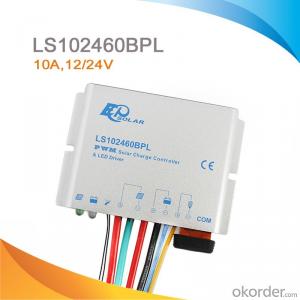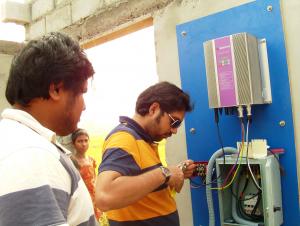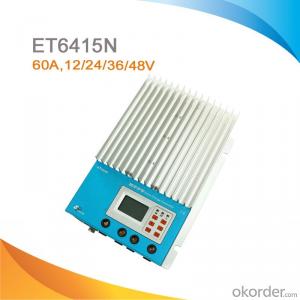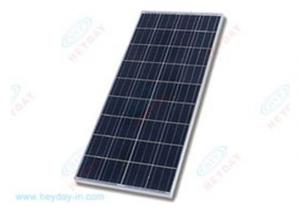Morningstar Solar Charge Controllers - PV Controller from China CNBM GS-50/100/150/200PF
OKorder Service Pledge
OKorder Financial Service
You Might Also Like
Description:
CNBMSOLAR is a world-leading and Vertical integrated manufacturer of high-performance with Silicon,
Wafer, Cells, Modules, which convert sunlight into electricity for residential, commercial, and utility-scale
power generation.
The capacity of CNBMSOLAR is reach to 1GW, and make sure each year our shipment capacity is more
Than 700-800MWs, at the same time, we have set up the largest solar power station with our partner
in Ukraine.
CNBM is a Quality + Service oriented company with“Excellence at Each Step” approach, composed of
the finest components from TUV and IEC-certified partners around the world, CNBM modules consistently
undergo a variety of trials at the company’s Test & Development Centre, ensuring peak performance
capabilities. The company is committed to develop and provide the world with clean and renewable energy
to ease the energy shortages as well as human kind’s impact on the environment.
Data:
Model | GS-50PFL2-R | GS-100PFL4-V | GS-150PFL6-V | GS-200PFL6-V | GS-300PFL6-V | ||
Rated Capacity(A) | 50 | 100 | 150 | 200 | 300 | ||
Max.PV modules output power(kwp) | 10.8 | 21.6 | 32.4 | 43.2 | 64.8 | ||
Rated Voltage(VDC) | 216 | 216 | 216 | 216 | 216 | ||
Max Load Current(A) | 50 | 100 | 150 | 200 | 300 | ||
Max Current on charging(A) | 55 | 110 | 165 | 220 | 330 | ||
Charge Loops | 2 | 4 | 6 | 6 | 6 | ||
Each PV maximum current (A) | 25 | 25 | 25 | 34 | 50 | ||
Max.Open circuitvoltage(VDC) | 500 | 500 | 500 | 500 | 500 | ||
Overcharge protection | 255.6 | 255.6 | 255.6 | 255.6 | 255.6 | ||
Overdischarge protection | Protection | 194 | 194 | 194 | 194 | 194 | |
Resumption | 238 | 238 | 238 | 238 | 238 | ||
Current without load(ma) | <100 | <100 | <100 | <100 | <100 | ||
First low voltage protection for one load | Optional | Optional | Optional | Optional | Optional | ||
Diesel machine start | Optional | Optional | Optional | Optional | Optional | ||
Temperature compensation | Optional | Optional | Optional | Optional | Optional | ||
Display | LCD | LCD | LCD | LCD | LCD | ||
Display content | Battery voltage, loading current, charging current | ||||||
Communication interface(standard) | RS232 | RS232 | RS232 | RS232 | RS232 | ||
Lighting protection device(standard) | Piezo-resistor lighting protection | ||||||
Protection | Overcharge, over discharge, overload, short circuit, reverse polarity, lighting arrestor | ||||||
Protection class | IP20 | IP20 | IP20 | IP20 | IP20 | ||
Voltage descent(VDC) | Between solar battery and lead-acid battery | 0.7 | 0.7 | 0.7 | 0.7 | 0.7 | |
Between lead-acid battery and load | 0.1 | 0.1 | 0.1 | 0.1 | 0.1 | ||
Insulation resistance | ≥50MΩ | ≥50MΩ | ≥50MΩ | ≥50MΩ | ≥50MΩ | ||
Radiator temperature | ≤35℃(rated power reach heat balance) | ||||||
Withstand Voltage | 2500V | 2500V | 2500V | 2500V | 2500V | ||
Noisy(db、1m) | ≤50 | ≤50 | ≤50 | ≤50 | ≤50 | ||
Operating temperature(℃) | -10~+50 | -10~+50 | -10~+50 | -10~+50 | -10~+50 | ||
Storage temperature(℃) | -25~+55 | -25~+55 | -25~+55 | -25~+55 | -25~+55 | ||
Operating humidity | 0~95%(non-condensing) | ||||||
Operating altitude(m) | ≤5000(applied regulation on GB/T3859.2 when sea level above 1000m) | ||||||
Dimension(dxwxh)mm | 350×483×177 | 500×480×850 | 500×600×1100 | 500×600×1100 | 500×600×1100 | ||
Weight(Kg) | 20 | 75 | 110 | 115 | 120 | ||
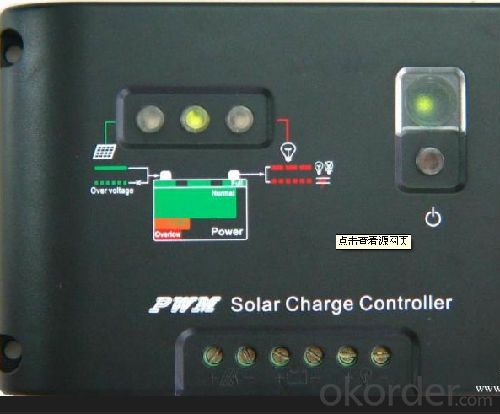
FAQ:Pls introduce more about CNBM.
CNBM Group is short for China National Building Materials Group Corporation, which is established in 1984 with approval from the State Council
CNBM Group is the largest comprehensive building materials industry group in China
The Group has a total asset of over RMB 360 billion, more than 180,000 employees and 17 subsidiaries
- Q: What is the maximum number of solar panels that a solar controller can handle?
- The number of solar panels that a solar controller can handle depends on the controller's specifications and capabilities. Typically, the capacity of a solar controller is determined by its maximum input voltage and current rating. Solar panels generate direct current (DC) electricity, and the solar controller's role is to regulate and optimize the flow of this DC power. This is done in order to charge a battery bank or supply power to an electrical load. The controller must be able to handle the voltage and current produced by the solar panels without surpassing its own limitations. To determine the maximum number of solar panels that a controller can handle, it is necessary to consider the voltage and current ratings of the panels and compare them to the specifications of the controller. By dividing the maximum input voltage and current rating of the controller by the corresponding values of the solar panels, one can estimate the maximum number of panels that can be safely connected. It is crucial to note that surpassing the maximum capacity of a solar controller can result in performance issues, such as reduced efficiency, overheating, or even damage to the controller. Therefore, it is essential to carefully examine the specifications of the controller and ensure that the total voltage and current of the connected solar panels are within its limits. This is necessary for reliable and safe operation.
- Q: Can a solar controller be used in a solar-powered electric bus charging system?
- Yes, a solar controller can be used in a solar-powered electric bus charging system. A solar controller helps regulate the flow of electricity from the solar panels to the batteries, ensuring efficient charging and preventing overcharging or damage to the batteries. It is an essential component in managing the charging process in a solar-powered electric bus charging system.
- Q: How does a solar controller handle shading or partial shading of solar panels?
- A solar controller handles shading or partial shading of solar panels by utilizing a technique called Maximum Power Point Tracking (MPPT). MPPT technology allows the controller to constantly monitor the voltage and current output of the solar panels and adjust the operating parameters to ensure they are always operating at their maximum power output, even when shaded. This helps to optimize the overall performance of the solar system and mitigate the impact of shading on energy generation.
- Q: Can a solar controller be used with a solar-powered refrigerator?
- Yes, a solar controller can be used with a solar-powered refrigerator. A solar controller is designed to regulate the flow of electricity from the solar panel to the battery, ensuring optimal charging and preventing overcharging. It can effectively manage the power supply to a solar-powered refrigerator, ensuring efficient operation and protecting the battery from damage.
- Q: Can a solar controller be used with a solar-powered agricultural irrigation system?
- Yes, a solar controller can be used with a solar-powered agricultural irrigation system. The solar controller helps regulate and optimize the flow of electricity from the solar panels to the irrigation system, ensuring efficient use of energy and preventing overcharging or undercharging of batteries. It also provides control functions like timer settings, water flow management, and monitoring of system performance.
- Q: Can a solar controller be used with solar-powered outdoor lighting?
- Yes, a solar controller can be used with solar-powered outdoor lighting. A solar controller is an essential component of a solar power system, including solar-powered outdoor lighting. It regulates and manages the flow of energy from the solar panels to the lighting system, ensuring efficient charging and optimal performance. The solar controller helps protect the batteries from overcharging or discharging, prolonging their lifespan. It also provides various control functions, such as timers, dimming options, and remote control capabilities, allowing users to customize the lighting settings according to their needs. Overall, a solar controller is an integral part of a solar-powered outdoor lighting system, ensuring its reliable and efficient operation.
- Q: Can a solar controller be used with different types of solar inverters?
- Yes, a solar controller can be used with different types of solar inverters. The solar controller acts as a bridge between the solar panels and the inverters, regulating the flow of power and ensuring proper charging and protection of the batteries. As long as the solar controller is compatible with the voltage and current ratings of the solar panels and batteries, it can be used with various types of inverters.
- Q: What is the maximum voltage and current rating for a solar controller?
- The maximum voltage and current rating for a solar controller depend on the specific model and manufacturer. However, common ratings for solar controllers range from 12-48 volts for voltage and 10-60 amps for current.
- Q: Can a solar controller be used with solar panels of different flexibilities?
- Yes, a solar controller can be used with solar panels of different flexibilities. The solar controller's main function is to regulate the flow of electricity between the solar panels and the battery or load. It does not depend on the flexibility of the panels, but rather on their voltage and current ratings. As long as the panels' electrical characteristics are compatible with the solar controller, they can be used together regardless of their flexibilities.
- Q: How does a solar controller handle battery under-temperature protection?
- A solar controller handles battery under-temperature protection by monitoring the temperature of the battery and adjusting its charging and discharging parameters accordingly. When the battery temperature drops below a certain threshold, the controller reduces the charging current to prevent overcharging and potential damage to the battery. This is important because low temperatures can reduce the battery's capacity and increase its internal resistance, making it more susceptible to damage. The controller may also adjust the charging voltage to compensate for the temperature, ensuring optimal charging performance. Additionally, some advanced solar controllers may activate a heating element or provide temperature compensation to maintain the battery's temperature within a safe operating range. Overall, the goal of the solar controller's under-temperature protection feature is to prolong the battery's lifespan and optimize its performance under different temperature conditions.
Send your message to us
Morningstar Solar Charge Controllers - PV Controller from China CNBM GS-50/100/150/200PF
OKorder Service Pledge
OKorder Financial Service
Similar products
Hot products
Hot Searches
Related keywords
